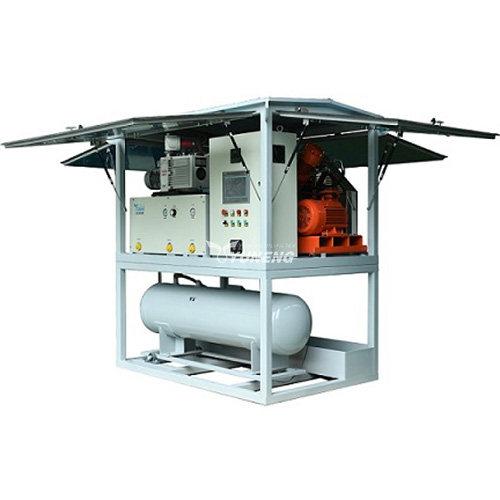Sulfur Hexafluoride (SF6) has long been recognized as a vital insulating gas in the electrical industry, facilitating the efficient and reliable operation of high-voltage equipment such as switchgear and circuit breakers. However, as concerns about environmental impact and greenhouse gas emissions rise, the need for effective SF6 gas recovery equipment becomes increasingly imperative. This article delves into the significance of SF6 gas recovery equipment, its functionalities, and the role it plays in promoting sustainable practices within the electrical industry.
Understanding SF6 Gas in Electrical Equipment
SF6, a colorless, odorless, and non-flammable gas, possesses excellent electrical insulation properties, making it an ideal choice for use in high-voltage electrical equipment. While SF6 does not pose a direct threat to human health, it is characterized as a potent greenhouse gas with a high global warming potential. As a result, the responsible management of SF6 becomes paramount to mitigate environmental impact.
The Role of SF6 Gas Recovery Equipment
SF6 gas recovery equipment is designed to address the challenges associated with the handling and recycling of SF6 in electrical equipment. The primary functions of these systems include:
Gas Recovery:
SF6 gas recovery equipment is equipped with specialized compressors and vacuum pumps designed to extract the gas from electrical equipment during maintenance, service, or decommissioning processes.
Gas Purification:
The recovered SF6 gas often contains impurities, moisture, and decomposition by-products. SF6 gas recovery units incorporate purification systems to remove these contaminants, ensuring the gas meets industry specifications for reuse.
Storage and Transportation:
Once recovered and purified, the SF6 gas is stored in dedicated containers equipped with pressure and temperature monitoring systems. This facilitates safe storage and transportation, preventing leaks and ensuring compliance with safety regulations.
Recycling and Reclamation:
SF6 gas recovery equipment contributes to the recycling and reclamation of the gas, reducing the need for fresh SF6 production and minimizing environmental impact. This aligns with global efforts to achieve sustainable and circular practices in the electrical industry.
Benefits of SF6 Gas Recovery Equipment
Environmental Stewardship:
SF6 gas recovery equipment plays a crucial role in minimizing the release of SF6 into the atmosphere, contributing to environmental conservation and the reduction of greenhouse gas emissions.
Resource Conservation:
By recovering, purifying, and reusing SF6, these systems contribute to resource conservation by diminishing the demand for new SF6 production and lowering the environmental footprint associated with its manufacturing.
Compliance with Regulations:
The use of SF6 gas recovery equipment ensures compliance with stringent environmental regulations and standards governing the handling and disposal of SF6 in the electrical industry.
Cost-Efficiency:
Implementing SF6 gas recovery systems is cost-effective in the long run, as it reduces the need for continuous replenishment of SF6 and minimizes the expenses associated with new gas procurement.
Conclusion
As the electrical industry seeks sustainable solutions to address environmental concerns, SF6 gas recovery equipment emerges as a critical component in the responsible management of SF6. By facilitating the recovery, purification, and reuse of SF6 gas, these systems not only ensure the reliability of electrical equipment but also contribute to global efforts toward a more sustainable and environmentally conscious future. As technology continues to advance, the ongoing development and adoption of innovative SF6 gas recovery equipment will play a pivotal role in shaping the eco-friendly landscape of the electrical industry.

